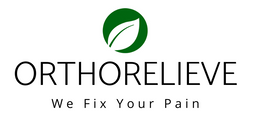What is osteoporosis?
Osteoporosis is a disease that causes the bones to loose mass and strength and weaken to a stage where they can easily break. It occurs mostly in bones on the hip, spine and wrist.
What are the causes of osteoporosis?
Your bones are always in the process of recycling itself. When old bone is broken down, new bone is then regenerated to replace it. In young people, this process of regeneration occurs at a faster rate. As a result, bone mass increases and the person grows taller and bigger. After the early 20s this process slows, and most people will reach their peak bone mass in their 30s. Beyond that age, bone mass slowly deteriorates.
Who are at risk of osteoporosis?
Osteoporosis can affect both men and women. However, white and Asian women who are past menopause are at a higher risk of getting osteoporosis. In fact women are four times more likely to get the disease than men. Age is also another factor as the older the person gets, the higher the risk. People who have a family history of osteoporosis stand to have a higher chance of getting the disease, as are people of smaller body frames as they have less bone to lose as compared to people who are larger framed.

Osteoporosis symptoms
At the early stages, there are hardly any symptoms. However as the disease progresses, patients might start to experience symptoms such as back pain due to a collapsed vertebra. They may also sustain fractures easily in certain parts of the body. Over time, as a person grows older, he may also suffer loss of height and become smaller in size due to loss of bone mass. Other physical side effects of osteoporosis especially in the elderly include a poor or stooped posture.
Osteoporosis diagnosis
Your healthcare provider may order a bone density test, which is an X-ray that uses a small amount of radiation to check how solid the bones are. These tests, also known as DXA scans, are generally the most reliable method to diagnose osteoporosis and predict any risk of fracture.

Osteoporosis treatment
Osteoporosis can be treated with various types of medication. Most of them work by reducing the rate of bone break down and increasing the rate of bone regeneration. The effect of these medications is to reduce fractures. As this article is for information only and not meant to give medical advice, please consult with your doctor and he will recommend the most suitable medicines for your situation. Your doctor may also suggest physical therapy which will teach you certain weight bearing and resistance exercises to help with the condition.
How to prevent osteoporosis?
Simple lifestyle habits can help to prevent or delay the onset of osteoporosis. These include a nutrition rich diet as well as regular exercise.
A diet high in calcium is recommended for strong bones to prevent osteoporosis. Calcium rich foods include:
- Dark green leafy vegetables
- Low-fat dairy products
- Fortified plant based milks (almond, soy, rice)
- Salmon or sardines with bones
- Tofu
- Cereals that are high in calcium
- Almonds
- Low fat yogurt
- Cheese

As best as possible, try to get your calcium intake through natural foods instead of taking supplements. This is because some experts believe that too much supplements may lead to kidney stones and heart disease.
Get your Vitamin D
Vitamin D is important as it improves the body's ability to absorb calcium. You can get a good dose of vitamin D from the sun. Of course this does not mean that you overexpose yourself until you get sunburnt, as this will increase the risk of getting skin cancer. Just going for a 30 minute walk in the park in bright sunlight everyday should be sufficient enough to get a reasonable amount of vitamin D into your body.
Regular exercise
Nobody can refute the fact that exercise is good for your body in more ways than one. Exercise helps to build strong bones and prevent bone loss, but you must do it regularly and consistently. To get the most benefit from exercise in the prevention of osteoporosis, try combining strength training and weight bearing exercises. Strength training helps builds muscles and strengthen bones, while weight bearing exercises like walking, jogging and running, help strengthen the bones in the lower body. Apart from building stronger bones, exercise helps build up the body's resistance to disease and can prevent many illnesses too.
Living with osteoporosis
If you already have osteoporosis, here are some tips on how to live with it and still have a comfortable and normal life. Maintaining good lifestyle habits is key. This means having a healthy diet rich in calcium, reducing drinking and smoking, getting regular exercise, and having moderate exposure to sunlight so you can get enough vitamin D.
OrthoRelieve sells orthopedic back braces which may help stabilize the spine and relieve pain in certain conditions including osteoporosis. Find out more by exploring their collection of back braces by clicking the link below.



